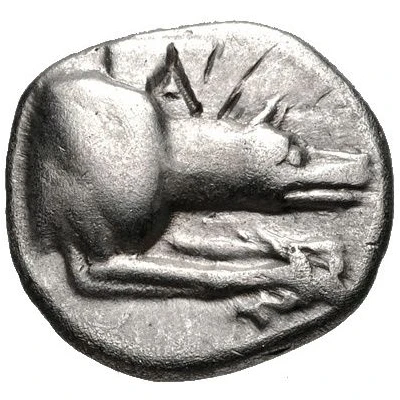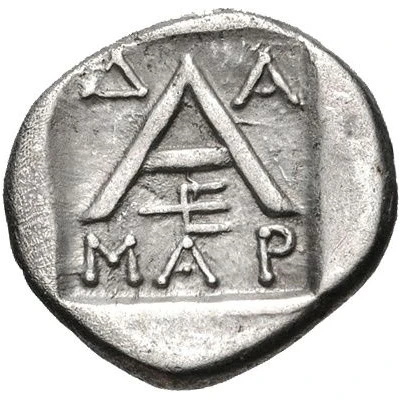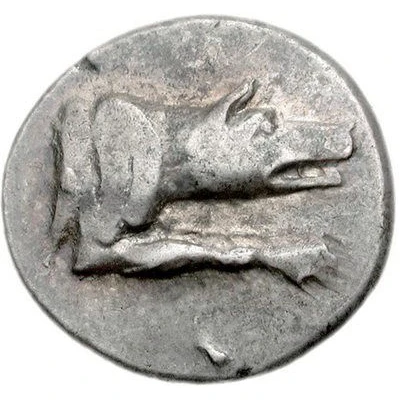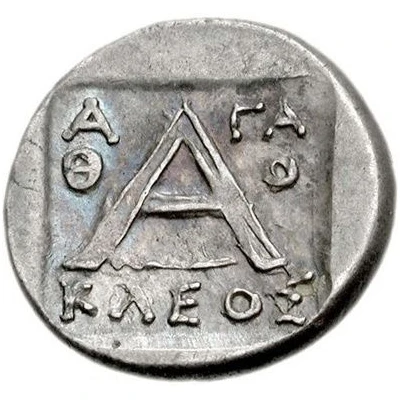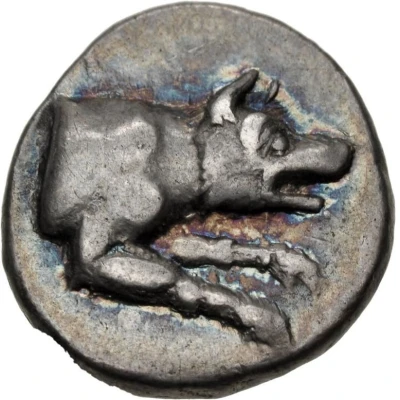
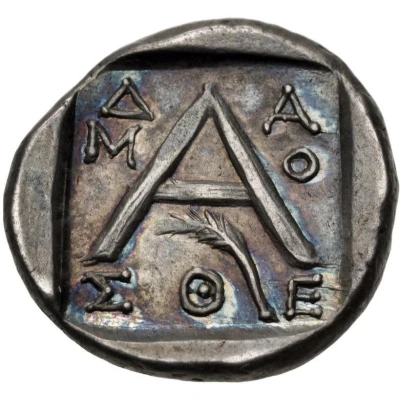

© Classical Numismatic Group, Inc.
Triobol - Damosthe 90 BC - 40 BC
| Silver | 2.32 g | 14.5 mm |
| Issuer | Argos (Argolis) |
|---|---|
| Type | Standard circulation coin |
| Years | 90 BC - 40 BC |
| Value | Triobol (½) |
| Currency | Drachm |
| Composition | Silver |
| Weight | 2.32 g |
| Diameter | 14.5 mm |
| Shape | Round (irregular) |
| Technique | Hammered, Incuse |
| Orientation | Variable alignment ↺ |
| Demonetized | Yes |
| Updated | 2024-10-09 |
| Numista | N#410909 |
|---|---|
| Rarity index | 100% |
Reverse
Large A; Δ-A/M-O/ΣΘE around, palm frond below; all within incuse square.
Script: Greek
Lettering:
Δ-A
M-O
ΣΘE
Interesting fact
The Triobol - Damosthe coin was used as a form of currency in ancient Greece during the Hellenistic period, specifically in the city of Argos (Argolis) between 90 BC and 40 BC. Despite being made of silver, the coin was relatively small in size, weighing only 2.32 grams. This is interesting because it highlights the importance of coinage in ancient Greece, where even small denominations like the Triobol were widely used for everyday transactions. Additionally, the fact that the coin was made of silver, a valuable and durable metal, speaks to the importance of trade and commerce in the region during that time period.
